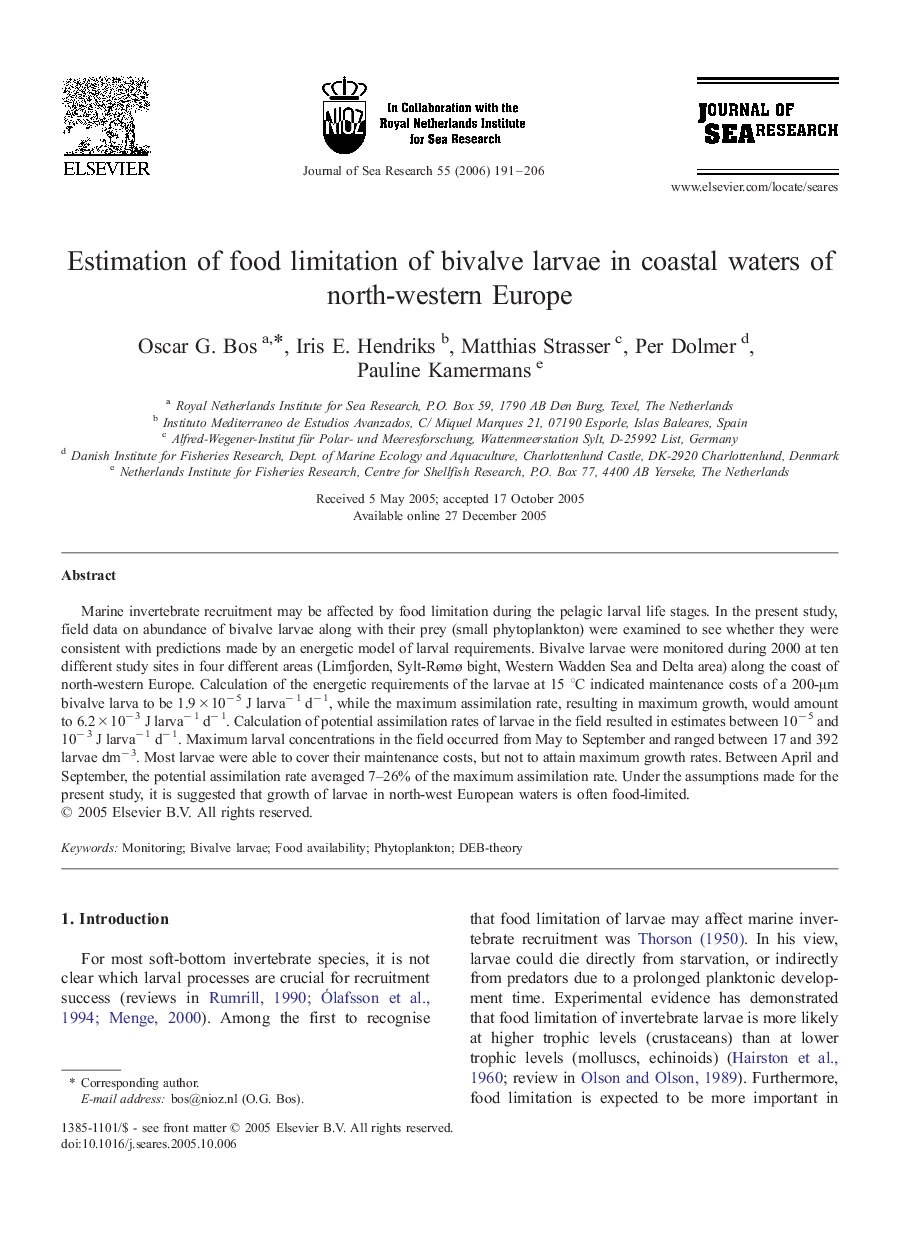| Article ID | Journal | Published Year | Pages | File Type |
|---|---|---|---|---|
| 4550494 | Journal of Sea Research | 2006 | 16 Pages |
Marine invertebrate recruitment may be affected by food limitation during the pelagic larval life stages. In the present study, field data on abundance of bivalve larvae along with their prey (small phytoplankton) were examined to see whether they were consistent with predictions made by an energetic model of larval requirements. Bivalve larvae were monitored during 2000 at ten different study sites in four different areas (Limfjorden, Sylt-Rømø bight, Western Wadden Sea and Delta area) along the coast of north-western Europe. Calculation of the energetic requirements of the larvae at 15 °C indicated maintenance costs of a 200-μm bivalve larva to be 1.9 × 10− 5 J larva− 1 d− 1, while the maximum assimilation rate, resulting in maximum growth, would amount to 6.2 × 10− 3 J larva− 1 d− 1. Calculation of potential assimilation rates of larvae in the field resulted in estimates between 10− 5 and 10− 3 J larva− 1 d− 1. Maximum larval concentrations in the field occurred from May to September and ranged between 17 and 392 larvae dm− 3. Most larvae were able to cover their maintenance costs, but not to attain maximum growth rates. Between April and September, the potential assimilation rate averaged 7–26% of the maximum assimilation rate. Under the assumptions made for the present study, it is suggested that growth of larvae in north-west European waters is often food-limited.
